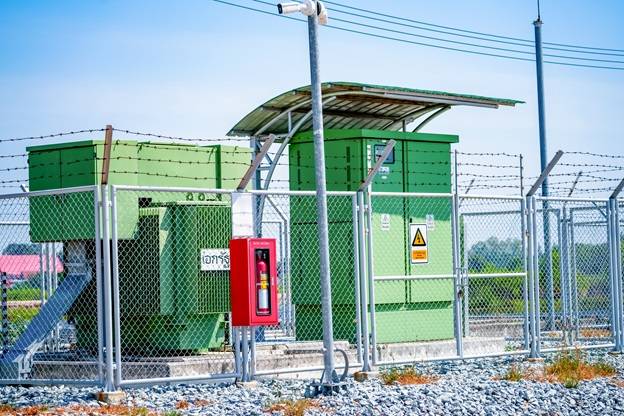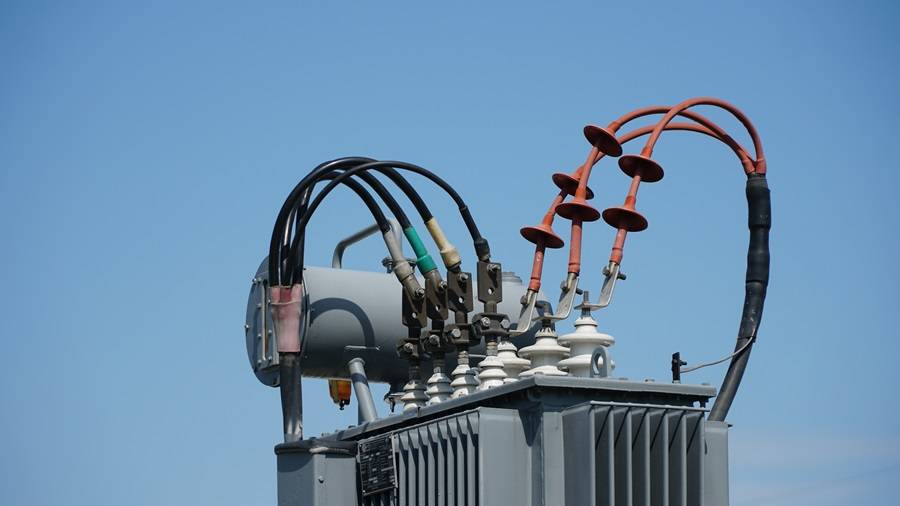TRAFO station (transformer station) – construction and operation
 TRAFO station – transformer station
TRAFO station – transformer station
What is a TRAFO station? How is it constructed? What role does it play in the power grid? What are the different types of transformer stations? We encourage you to read the information about the main part of the network thanks to which, as an end user, you have access to electricity.
What is a transformer station?
Transformer station, TRAFO station, transformer station – these are different terms used to name the same element of the electricity network. As the name suggests, a transformer station is a substation in which transformation takes place, i.e. a change in the parameters of electric current at different voltage levels. Therefore, the role of the TRAFO station is the distribution of electricity. Thanks to it, end users use electricity with appropriate and safe voltage. The function of the transformer station indicates that it is a fundamental component of the power grid.
Construction of a transformer station
Let’s take a look at how a transformer station is built. The basic components that make up a TRAFO station are:
- transformer
- medium voltage (MV) switchgear
- low voltage (LV) switchgear
- any additional auxiliary equipment
The equipment comprising a TRAFO substation can therefore transform energy either from medium voltage to low voltage (for energy consumers) or from low voltage to medium voltage (for energy generators). From the perspective of the end consumer, the former process is crucial. When the energy sent from the power station through the highest or high voltage networks reaches the HV/MV transformer station, the voltage is reduced to a value in the range of 10 kV to 30 kV. At this point, the transformer station plays an important role in the further distribution of energy. It is there that the voltage is lowered to the level, which allows energy to be transmitted directly to end consumers.
The TRAFO station, to which the medium and high voltage overhead lines are connected, is sometimes referred to as the main supply point (MSP). In the network, it is also possible to distinguish the grid connection point (GCP), which is a maintenance-free facility that receives electricity from generation units (e.g. wind farms or photovoltaic farms) and introduces it into the electricity distribution system. It is usually a substation with a 110 kV to medium voltage transformation – depending on the connection conditions issued, from 15 to 30 kV, prepared for control, signalling and measurements in the substation’s remote control and supervision system. – w zależności od wydanych warunków przyłączenia od 15 do 30 kV, przygotowana do sterowania, sygnalizacji i pomiarów w systemie zdalnego sterowania i nadzoru stacji.

Types of transformer station
What types of transformer stations can be distinguished? The division is made with regard to where and how the substation is located. Thus, one can distinguish:
- pole (column) or overhead stations
- indoor stations
- container stations
- mobile trafo stations
What characterises the different types of transformer stations? Their common features are, of course, the basic functions and equipment elements (with differences in terms of e.g. the parameters of the components used) and the purpose. Differentiating factors are e.g. the type of end customer or the location of the transformer station.
Pole (column) or overhead stations
Pole stations (sometimes referred to as column stations), as the name suggests, are usually placed on concrete or reinforced concrete poles, specially prepared for this purpose. It is an overhead type of substation and is most often used to supply consumers in rural, low-density areas, but also in suburban or residential areas from medium voltage (MV) overhead or cable network. Typically, these are stations with a transformer with a power rating of up to 400 kVA, but transformers with higher power ratings also occur. Pole substations can be located at a distance of not less than 3 metres if located near buildings made of non-combustible materials, or not less than 5 metres from other types of buildings. These TRAFO stations are relatively inexpensive and quick to install and not very problematic to operate.
Indoor stations
Indoor stations are usually located in the interiors of buildings, such as residential buildings, office or service premises and industrial buildings. Modern substations are relatively compact in size, which makes them easy to locate. However, it should be remembered that in Poland, transformer stations may be located in buildings provided that the vertical and horizontal distance to rooms where people are permanently present is at least 2.8 m. In addition, walls and ceilings must provide a fire separation and are to provide protection against the ingress of liquids and gases. Indoor substations are used to supply e.g. housing estates in urban areas, suburban settlements, consumers in rural areas, but can also be used to supply e.g. industrial plants and construction industry.
Container stations
Container stations are sometimes referred to as complete electrical installations. They take the form of a container equipped with all the components of a substation such as transformer, MV switchgear, LV switchgear, metering systems, internal installations, etc. The transformers used in these substations have a power rating of 160 to 1,000 kVA and the stations are used to supply low-voltage power networks, with a voltage of 3×230/400 V. Container stations are used to supply power to housing estates, public buildings, recreational areas (e.g. parks), shopping centres, industrial plants, and are also used in RES and on construction sites.
In addition, container stations can also be subdivided according to the way they are operated. A distinction is made between internally serviced stations, i.e. where there is an internal service corridor, and externally serviced stations, where access to the individual units is from the outside by opening a door. The case of these stations can be made of concrete, steel or aluminium.
Mobile stations
Mobile stations are distinguished above all by the fact that they can be easily moved and transported to different locations. To this end, they are built on a base that facilitates movement, e.g. on wheels or skids. They are mainly used for emergency power supply in the event of failure of a stationary station, but also for special applications, e.g. in construction or industry.
Suitability of TRAFO stations
A transformer station (TRAFO) is a key component of the electricity network, responsible for the transformation and distribution of electricity at different voltage levels, enabling the safe use of energy by end users. Through transformer stations, the voltage of the energy is adjusted to the appropriate level, allowing it to be distributed efficiently and safely to homes, businesses and other users. Depending on their location and purpose, they play a key role in ensuring the continuity and reliability of the electricity supply.